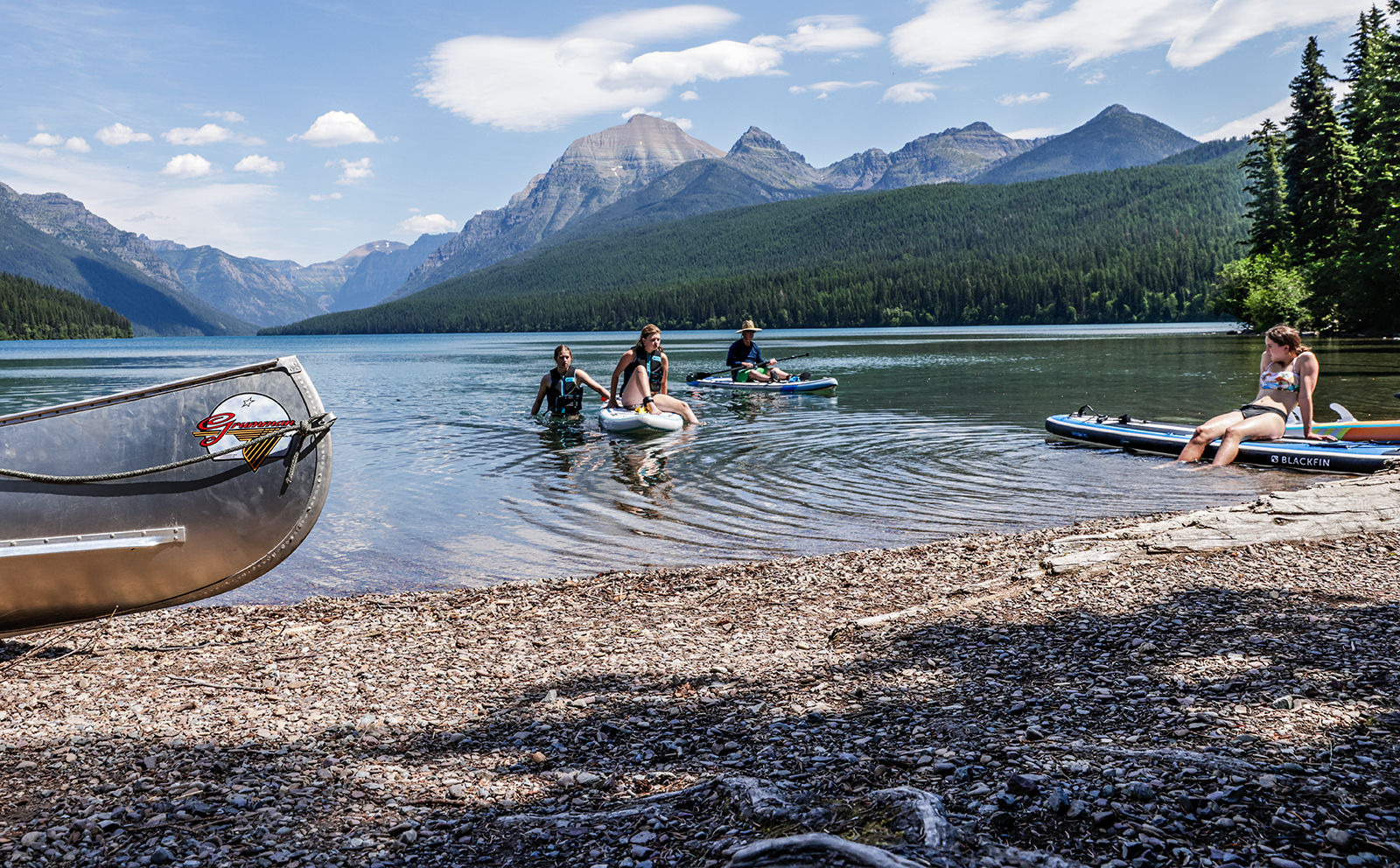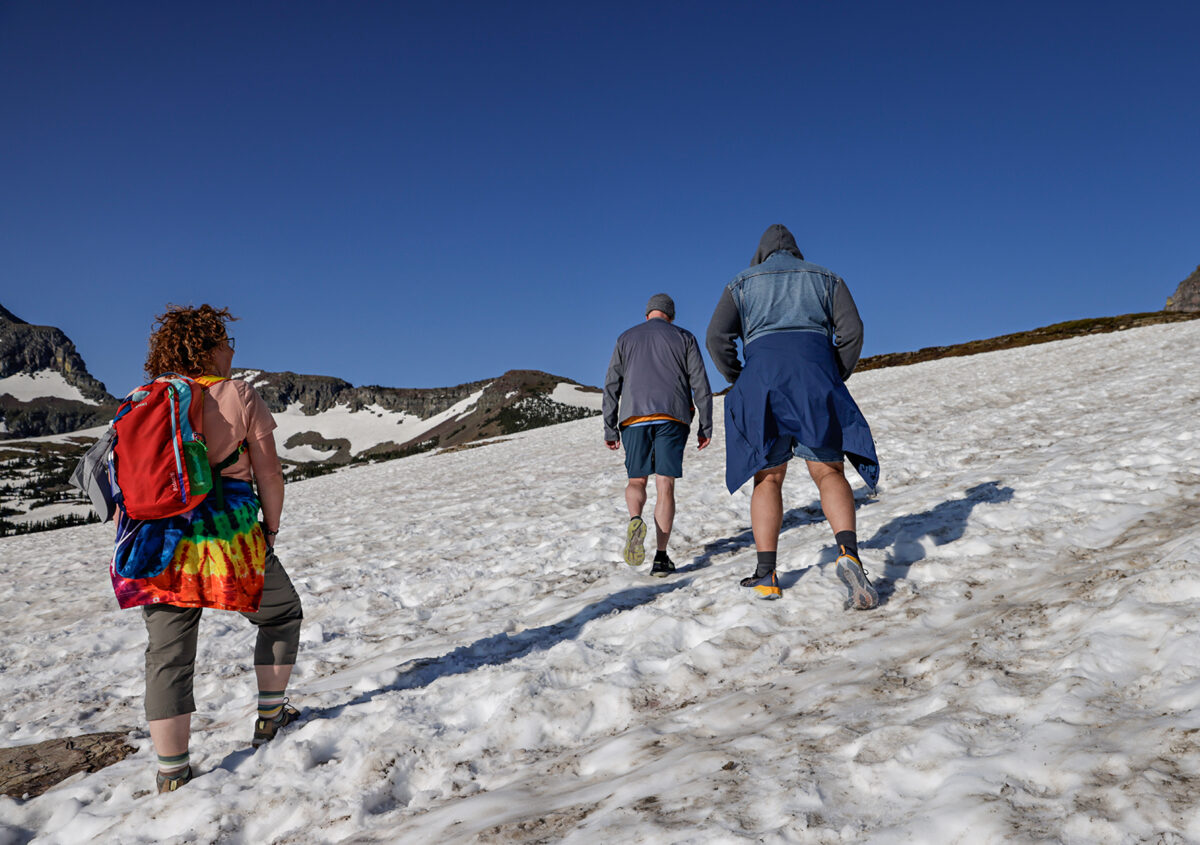Overall Visitation to Glacier Park Up 2.2% Over Last Year
Despite a 3.4% dip in visitors during the month of July, overall year-to-date visitation remains on pace to exceed last year, which was the park’s second-busiest on record
By Tristan Scott
More than 765,000 people visited Glacier National Park in July, according to new visitation data, which revealed a nearly 3.4% dip in visitor traffic compared to the same period last year.
But the park’s overall year-to-date visitation data could still be one for the record books, a feat that’s all the more impressive given the inclement weather visitors endured in June and July. For instance, last month was the sixth-wettest July on record in West Glacier since 1948, with Kalispell registering 143% of normal precipitation. Meanwhile, June’s 576,577 visitors marked a nearly 5% increase over last year, despite a summer-solstice snowstorm that temporarily shut down the alpine sections of the Going-to-the-Sun Road when upper elevations received several inches of snow.
Indeed, this year’s tranche of visitors has been decidedly more determined than last year’s to see Glacier National Park, braving wind, rain, fog, and snow to set a record pace. In the first seven months of 2025, the park’s year-to-date visitation increased by 2.2% over last year, when Glacier surpassed the 3.2-million mark (3,211,813 people) for only the second time in Glacier’s 114-year history, representing a 9.4% increase over 2023 (2,936,260 people)
This year’s data also reveals that 238,766 visitors so far in 2025 came to Glacier in May, which is nearly 14% more than the 209,650 people who visited Glacier in May 2024. That’s due in part to the region’s warm spring, and the legions of cyclists who converged on the park’s lower-elevation corridors while road crews worked to clear snow from the Going-to-the-Sun Road’s alpine stretches.
This year, the scenic highway’s full length opened to motorists on June 16 before the snowstorm temporarily closed it days later.
Visitation trackers have recorded significant gains at nearly all of the park’s other entrances so far this year, including those that don’t afford visitors access to the Going-to-the-Sun Road. For instance, Two Medicine registered an uptick in visitation of 8.4% in July and a 44% increase overall compared to last year, with 161,084 people visiting that area of the park. The Polebridge entrance station located up the remote North Fork Flathead River that forms the park’s western boundary showed a 13.8% overall increase in visitation, with 40,459 people entering through its gates.
Another factor that makes the park’s robust visitation all the more remarkable this year is the closure of Many Glacier, which since July 1 has been off limits to the general public, except for visitors with a day-hiker shuttle ticket, a backcountry camping permit, or a commercial service or lodging reservation.
But even before the closure went into effect last month, the restrictions on vehicle traffic due to construction and limited parking capacity blunted visitation to Many Glacier, which during most summers stands out among the park’s most popular areas.

In May, for instance, Many Glacier reported a 27% drop in visitors compared to the year prior, with 11,578 people passing through its gates compared to 15,891 in May 2024. In June, that number dipped to 40%, with 42,557 visiting Many Glacier compared to 70,971 the year prior. And in July, with the closure in effect, park officials clocked a 65% drop in visitation to Many Glacier, with 30,943 people instead of the 88,475 who visited the area in 2024.
In announcing the restrictions last year, Superintendent Dave Roemer acknowledged that “2025 will not be an ideal year to plan a visit to the Many Glacier Valley.” Still, park officials stopped short of closing the area, and have taken steps to provide the public access to popular trailheads.
Over the past two decades, annual visitation at Glacier National Park has increased from approximately 1.5 million to over 3.2 million visitors, most of them concentrated along the Going-to-the-Sun Road corridor and other front-country destinations during the peak season of June through September, creating severe congestion at the park’s most popular entrances.
To manage that congestion, Glacier is in the fifth consecutive year of requiring a vehicle reservation for park visits. The most prominent changes to this year’s vehicle-reservation system revolve around a timed-entry vehicle reservation system.
Since June 13, vehicle reservations have been required for the west side of Going-to-the-Sun Road and the North Fork between 7 a.m. and 3 p.m. Visitors entering the park in a vehicle or on a motorcycle in either of those areas need a timed entry vehicle reservation or a service reservation, as well as a valid park pass, which they can purchase upon entry or on recreation.gov.
The vehicle reservation requirement expires on Sept. 28.